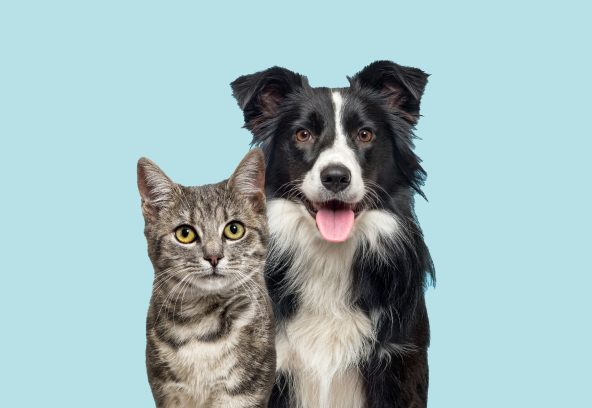Positive reinforcement is one of the most effective and humane training techniques for pets. It involves rewarding desired behaviours, which increases the likelihood that those behaviours will be repeated in the future. By using treats, praise, or playtime, you can encourage your pet to repeat good behaviours and create a happy, trusting relationship between you and your animal.
Here’s how you can get started with positive reinforcement and make it a part of your pet's daily routine.
What is Positive Reinforcement?
Positive reinforcement is a training method based on the principle that behaviours followed by positive outcomes are more likely to be repeated. In simple terms, it’s about rewarding your pet for doing something right, rather than punishing them for doing something wrong. This can include using treats, toys, verbal praise, or petting.
The key is to reward your pet immediately after they perform the desired behaviour so they can make the connection between the action and the reward.
Where to Start with Positive Reinforcement
Identify Desirable Behaviours
The first step in positive reinforcement is determining which behaviours you want to encourage. These might include:
- Sitting calmly when guests arrive
- Coming when called
- Walking nicely on a leash
- Going to the bathroom outside
- Following basic commands like "sit" or "stay"
Once you’ve identified the behaviours you’d like to see more often, you can begin reinforcing them.
Choose Your Rewards
Next, decide what kind of rewards will motivate your pet. Different pets have different preferences, so you’ll need to experiment a bit. Common rewards include:
- Treats: Small, tasty treats are often the easiest and most effective form of reinforcement.
- Toys: Some pets love to play with toys, so offering a fun play session can be a great reward.
- Praise: Verbal praise or affectionate petting can be rewarding for some pets, especially if they seek your attention.
- Freedom or Access to a Favourite Activity: Sometimes allowing your pet to engage in something they love (like going for a walk or playing outside) can be a rewarding experience.
Timing is Key
For positive reinforcement to be effective, it’s crucial to reward your pet immediately after they perform the desired behaviour. This helps them understand exactly what action earned the reward. For example, if you’re training your dog to sit, give them a treat right after they sit down, not after they've sat for a while.
Keep Rewards Consistent
In the beginning, provide rewards frequently to reinforce the behaviour. As your pet learns, you can start rewarding them intermittently, making the reinforcement less predictable. This is called "variable reinforcement" and helps keep the behaviour strong.
What to Do During Training Sessions
Start Small
Begin with simple tasks that your pet can easily perform. For example, if you’re training a dog to sit, give the command “sit” and reward them when they sit down. Gradually increase the complexity of the tasks as they become more proficient.
Use Short Sessions
Pets, especially young ones, have short attention spans. Keep training sessions short, around 5 to 10 minutes, to avoid overwhelming your pet. You can have multiple short sessions throughout the day.
Stay Calm and Positive
Your attitude will influence your pet’s response. Stay patient, calm, and positive during training. Pets can sense frustration, so maintaining a positive and upbeat approach will help your pet stay engaged and willing to learn.
Avoid Punishment
Positive reinforcement focuses on rewarding good behaviours, not punishing bad ones. Punishment can lead to fear, anxiety, or confusion, which may result in behavioural issues. If your pet makes a mistake, simply redirect them to the correct behaviour without scolding them.
Common Mistakes to Avoid
Inconsistent Reinforcement
Inconsistent reinforcement can confuse your pet and make it harder for them to learn. Make sure you’re consistently rewarding desired behaviours, especially in the beginning stages of training.
Rewarding the Wrong Behaviour
It’s important to ensure that you’re only rewarding the behaviours you want to see more of. For instance, if you reward your dog for jumping on you, they may start to think that jumping is a good way to get attention. Always reinforce the right actions.
Overusing Treats
While treats are a great tool for training, it’s important not to rely too heavily on them. Over time, you can phase out treats by offering other rewards like praise or playtime. This helps your pet learn that good behaviour is rewarded in various ways.
Positive Reinforcement for Different Pets
- Dogs: For dogs, positive reinforcement is commonly used to teach basic commands like "sit," "stay," and "come." You can also use it to discourage unwanted behaviours, such as barking or jumping.
- Cats: Cats can also benefit from positive reinforcement, though it may require a bit more patience. Rewarding your cat with treats or attention when they use the litter box or stop scratching the furniture can help.
- Rabbits: Positive reinforcement works well with rabbits too. Reward them with treats or petting when they use a litter box or perform tricks.
- Birds: Birds are very intelligent and can learn a variety of tricks using positive reinforcement. Offer treats or verbal praise when they perform a behaviour, like mimicking sounds or stepping onto your hand.
Final Thoughts on Positive Reinforcement
Positive reinforcement is a powerful tool for building a strong, trusting relationship with your pet. It encourages good behaviour in a way that is both kind and effective. Whether you’re teaching basic commands or addressing behavioural issues, this approach can help your pet thrive. Start with small, achievable goals, and gradually build up to more complex tasks as your pet becomes more confident. Remember to keep it fun, rewarding, and positive!



